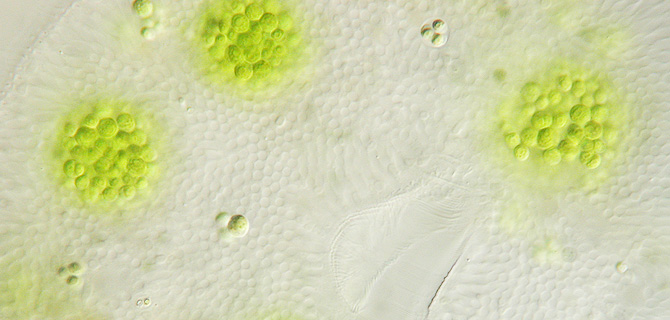Ultraviolet radiation effects
on planktonic freshwater ciliates:
An assessment of photoprotection and repair strategies
Ciliates play a fundamental role in microbial food webs of oceans and lakes because they are one of the major consumers of phytoplankton and bacteria and, hence, an essential link to higher trophic levels. In lakes, the most abundant ciliates are small prostomatids and oligotrichs that are known to feed efficiently on micro-algae and moreover, they are usually found predominantly in the uppermost meters of the water column.
Although many studies have assessed, for example, the feeding behaviour of ciliates, almost nothing is known about their strategies to cope with solar radiation, especially, with the ultraviolet radiation (UVR, 290-400 nm) that can alter their shape and motility or influence division and growth rates. Furthermore, studies on the direct effects of solar UVR on protists have shown that they are species-specific. As lakes above the tree-line are usually CDOM-poor and highly transparent to UVR, planktonic communities have to deal with high levels of solar radiation but also with low water temperatures and low nutrient/food availability. Effective strategies of the organisms to cope with the potentially harmful irradiation in alpine lakes are avoidance, protection and repair mechanisms.
Just recently, the presence of mycosporine-like amino acids (MAAs) has been described for the first time for several algae-bearing ciliates. However, there is evidence that the ciliates’ algal diet is also an MAA source. Moreover, UV radiation can damage DNA and cause mutagenic or lethal effects, although longer wavelengths of the UV-A and PAR can stimulate photorepair. Three major repair ways are known i.e., photoenzymatic repair (PER) or photoreactivation, nucleotide excision repair (‘dark repair’) and postreplication repair. The biological effects of UVR on an organism can be evaluated by quantifying the response to UVR impact as a function of irradiance and time. From wavelengths-specific experiments where the dose (i.e., cumulative exposure) and the dose-rate (i.e., exposure time) dependency of an organism are measured, biological weighting functions (BWF) can be calculated to model consequences of enhanced UVR in aquatic systems. However, to calculate a BWF, it is necessary, that the principle of reciprocity holds, i.e., the effect of the UVR dose has to be independent from the dose rate. If reciprocity does not hold, photorepair strategies such as PER are supposed to be the major defence against damaging UVR and the way of exposition of an organism to UVR is important for its survival.
The goal of this project is to study the sensitivity of common and widespread heterotrophic ciliates to incident levels of UVR and their protection and repair strategies. A combination of experiments in the lab and in situ will be performed to assess the impact of UVR on planktonic ciliates. To quantify the measured effects, the reciprocity principle will be tested and biological weighting functions calculated. Species-specific analyses shall identify i) the presence, accumulation and retention of mycosporine-like amino acids, ii) DNA damage and/or iii) the presence/absence of repair mechanisms (PER, dark repair). Moreover, biogeographic aspects of the ciliates observed will be elucidated from phylogenetic analyses.
Funded by the FWF Austrian Science Fund (P21013-B03).


